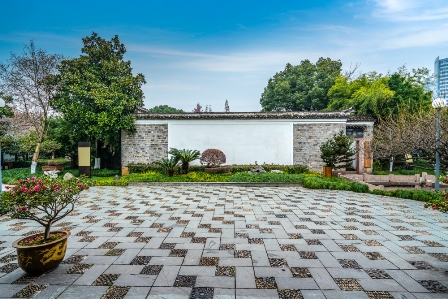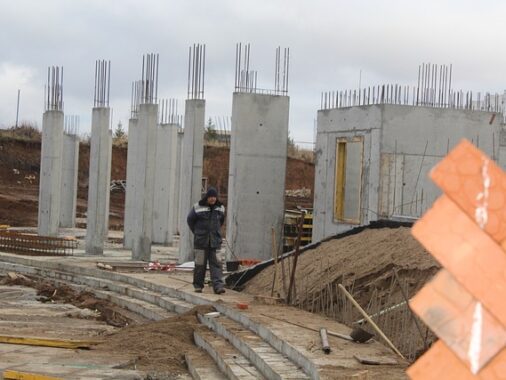Welcome to our comprehensive square yard calculator guide! Whether you’re planning a landscaping project, ordering materials for construction, or simply trying to determine the area of a space, our calculator and detailed explanations will help you accurately calculate square yards and understand the math behind the measurements.
What is a Square Yard and Why It Matters
A square yard is a unit of area measurement equal to a square measuring one yard on each side. In practical terms, visualizing a square yard can be helpful: it’s approximately the size of a medium-sized coffee table or about 9 square feet. Understanding how to calculate square yards is essential for numerous projects where materials are sold by this measurement, including:
- Carpeting and flooring installation
- Landscaping and sod placement
- Concrete and paving projects
- Fabric and textile purchases
- Painting projects for large surfaces
How to Calculate Square Yards: The Complete Process
Calculating square yards involves a straightforward process that our calculator simplifies, but understanding the manual method ensures you can verify results and handle unusual situations.
Step 1: Measure Your Space
Begin by measuring the length and width of your area using a tape measure. For irregular spaces, break them down into rectangular sections and measure each separately. Always measure in feet for easiest conversion to square yards, though our calculator accepts multiple measurement units.
Step 2: Convert to Yards (If Necessary)
If your measurements are in feet, convert them to yards by dividing by 3 (since 1 yard = 3 feet). For example, a space that is 15 feet long would be 5 yards (15 ÷ 3 = 5). Our calculator handles these conversions automatically, saving you time and reducing errors.
Step 3: Multiply Length by Width
Multiply the length (in yards) by the width (in yards) to find the area in square yards. The formula is simple: Square Yards = Length (yards) × Width (yards). For a space measuring 5 yards by 4 yards, the calculation would be 5 × 4 = 20 square yards.
Step 4: Account for Irregular Shapes
For L-shaped or irregular areas, divide the space into rectangular sections, calculate the square yards for each section separately, then add them together for the total area. Our calculator can handle these complex calculations by performing multiple calculations and summing the results.
Practical Applications: When You Need to Calculate Square Yards
Understanding real-world applications helps contextualize why calculating square yards accurately matters for both budgeting and material ordering.
Landscaping Projects
When ordering sod, mulch, or soil, suppliers typically price these materials by the square yard. Underestimate, and you’ll need to place another order (often with additional delivery fees). Overestimate, and you’ll waste money on excess materials. Our calculator helps you get the precise amount needed, potentially saving hundreds of dollars on larger projects.
Flooring Installation
Carpet, hardwood, tile, and other flooring materials are commonly sold by the square yard. Professional installers always calculate exact yardage to minimize waste and cost. With our calculator, you can verify contractor estimates or accurately plan your DIY flooring project.
Concrete and Paving
For driveways, patios, and walkways, concrete is typically ordered by the cubic yard, but knowing the square yardage is the first step in determining volume. Our calculator helps with the area measurement, which you can then use to calculate volume based on desired thickness.
Expert Tips for Accurate Measurements
After years of professional experience in construction and landscaping, we’ve compiled these expert tips to ensure your calculations are as accurate as possible:
- Always add a waste factor: For most projects, add 5-10% to your total square yardage to account for cutting waste, errors, or irregularities in the space.
- Measure twice, calculate once: The oldest advice in construction remains the most valuable. Double-check all measurements before finalizing your calculations.
- Consider pattern matching: For materials with patterns (like certain carpets or tiles), you may need additional yardage to ensure pattern alignment, sometimes up to 15% extra.
- Account for slopes: When measuring sloped areas, use the horizontal distance (run) rather than the sloped distance (rise) for accurate area calculations.
- Verify unit conversions When working between measurement systems, double-check that your calculator is using the correct conversion factors.
Common Mistakes to Avoid When Calculating Square Yards
Even experienced DIYers can make these common errors when calculating square yardage:
- Confusing square feet with square yards: Remember that 1 square yard equals 9 square feet. This is the most frequent error we encounter.
- Forgetting to convert all measurements: Ensure both length and width are in the same units before multiplying.
- Ignoring irregular areas: Not accounting for nooks, alcoves, or other non-rectangular spaces leads to significant miscalculations.
- Failing to consider material width: For materials like carpet that come in specific widths (typically 12 or 15 feet), the usable width affects how much material you need.
- Overlooking elevation changes On sloped properties, horizontal measurements differ from surface measurements.
Beyond Basic Calculations: Using Our Square Yard Calculator
Our calculator goes beyond basic square yard calculations by incorporating several advanced features:
- Multiple unit support: Input measurements in feet, inches, meters, centimeters, or yards—the calculator handles conversions automatically.
- Cost calculations: Determine total project costs by entering price per unit area.
- Flexible output units: View results in square yards, square feet, square meters, or other area units based on your preference.
- Detailed formula explanation: Understand the math behind your calculations with our step-by-step breakdown.
- Share functionality: Easily share your calculations with contractors, clients, or family members for verification or collaboration.
Frequently Asked Questions About Square Yard Calculations
How many square feet are in a square yard?
There are 9 square feet in 1 square yard. This is because a square yard measures 3 feet by 3 feet, and 3 × 3 = 9 square feet.
How do I calculate square yards from square feet?
To convert square feet to square yards, divide the number of square feet by 9. For example, 450 square feet ÷ 9 = 50 square yards.
Why do carpet installers use square yards instead of square feet?
The carpet industry traditionally uses square yards as the standard measurement unit. This convention dates back decades and persists partly because it makes numbers more manageable (500 square yards sounds less overwhelming than 4,500 square feet).
How accurate do my measurements need to be?
For most projects, measurements to the nearest inch or centimeter are sufficient. However, for expensive materials or large projects, greater precision may be warranted. Always round up rather than down to ensure you have enough material.
Conclusion: Master Your Measurements With Confidence
Accurately calculating square yards is an essential skill for countless home improvement and construction projects. With our comprehensive calculator and detailed guide, you’re now equipped to tackle any area measurement challenge with confidence. Remember to always double-check your measurements, account for waste, and when in doubt, consult with professionals for particularly complex projects.
Ready to start your project? Use our calculator at the top of this page to get precise square yardage calculations and cost estimates in seconds. Bookmark this page for future reference, and share it with friends who might find it helpful for their upcoming projects!





